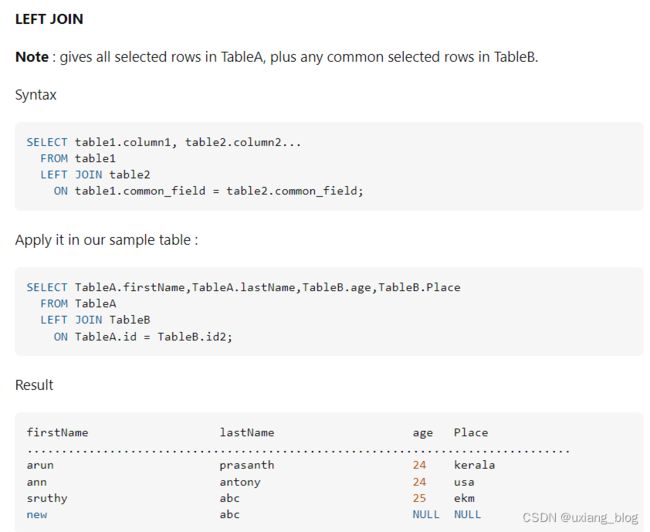- 基于 Websoft9 平台的 Odoo 教学实践:助力智能制造、物流与财务会计专业教师提升教学效果
开源
Websoft9作为企业级开源软件的自动化部署与管理平台,为高校智能制造、物流与财务会计等专业提供了完整的Odoo(开源ERP)教学解决方案。以下从部署、维护及功能扩展三方面解析其核心价值:一、部署:开箱即用的企业级业务场景模拟一键构建复杂业务架构Websoft9预置了Odoo全模块集成模板,部署时可自动关联PostgreSQL数据库、Nginx负载均衡及Let'sEncryptSSL证书,还原真
- 2025React岗位前端面试题180道及其答案解析,看完稳了,万字长文,持续更新....
祈澈菇凉
前端
1.什么是React?它的主要特点是什么?答案解析:React是一个用于构建用户界面的JavaScript库,主要用于构建单页应用。其主要特点包括:组件化:React应用由多个可重用的组件组成,便于管理和维护。虚拟DOM:React使用虚拟DOM提高性能,通过最小化实际DOM操作来优化渲染过程。单向数据流:数据在组件之间以单向流动的方式传递,简化了数据管理和调试。声明式编程:React允许开发者以
- 书籍-《优化基础:理论、工具及应用(论文版)》
机器学习人工智能
书籍:OptimizationEssentials:Theory,Tools,andApplications作者:FaizHamid出版:Springer编辑:陈萍萍的公主@一点人工一点智能下载:书籍下载-《优化基础:理论、工具及应用(论文版)》01书籍介绍本书探讨了运筹学和数学优化领域的最新发展和令人兴奋的挑战。它以统一且精心编排的方式呈现了以下内容:(a)现实生活中出现的新颖优化问题,并突出每
- 从 DeepSeek 到 AI 工具箱:Websoft9 应用托管平台赋能高校教学与科研
人工智能deepseek
从DeepSeek到AI工具箱:Websoft9应用托管平台赋能高校教学与科研人工智能技术的快速发展正在重塑高校的教学与科研生态。从智能教学辅助到跨学科研究,AI工具的应用场景不断扩展,而技术落地的复杂性也带来新的挑战。在这一背景下,如何将大模型能力与多样化AI工具无缝整合,构建安全、易用的科研教学环境,成为高校数字化转型的关键命题。一、高校智能化转型的三大痛点技术门槛高•AI工具部署依赖专业运维
- Websoft9 开源多应用平台:培养学生数字化能力的实战工具
开源实践
引言数字化教育转型的核心在于将技术工具与教学场景深度融合,但传统模式常因环境配置复杂、工具链割裂等问题阻碍实践教学效率。Websoft9开源多应用平台以标准化部署、多工具集成、轻量化运维为核心能力,为教育场景提供了一种技术门槛更低、协作效率更高的解决方案。本文基于实际教学需求与技术验证,探讨如何通过该平台构建数字化能力培养体系。一、技术特性与教育场景的适配性开源生态覆盖全技术栈,缩短教学准备周期平
- 聊聊关于Python与人工智能那些事
小G-biu-
python人工智能tensorflow
Python与人工智能:介绍Python在人工智能方面的应用Python是一种广泛使用的编程语言,也是人工智能领域中最受欢迎的语言之一。Python提供了许多用于构建和训练人工智能模型的库和框架。本文将介绍一些常见的人工智能技术以及Python在这些技术中的应用。OpenAIOpenAI是一个非营利组织,旨在推动人工智能的发展并促进其对人类的利益。OpenAI通过开发人工智能技术、研究人工智能的影
- 人形机器人报告:新一代GPU、具身智能与AI应用
小报告达人
机器人人工智能
今天分享的是人形机器人系列深度研究报告:《人形机器人专题:新一代GPU、具身智能与AI应用》。(报告出品方:中泰证券)核心观点GTC2024召开在即,关注新一代GPU、具身智能、AI应用三大方向。GTC2024将于当地时间3月18-21日在美国加州圣何塞会议中心及线上举行,预计发布加速计算、生成式AI以及机器人领域突破性成果。建议关注三大方向:1)B100及后续芯片路线。B100预计采用Black
- 从0到1,在Ubuntu 20.04 下编译 openWRT
姓张名江叫大江
软路由ubuntulinuxopenwrt
从0到1,在Ubuntu20.04下编译openWRT/LELD/老毛子固件(跳过八大坑,你就是赢家!)0.申明1.Virtualbox下载与安装2.Linux系统下载与安装2.1Ubuntu下载2.2在Virtualbox中安装Ubuntu3.固件编译4.老毛子固件编译5.后话0.申明本教程所用的软件及代码均是免费开源的,请大家自觉遵守相关的开源协议。在此向开源软件及开源代码的作者们致敬。因本人
- 【RabbitMQ】RabbitMQ中死信交换机是什么?延迟队列呢?有哪些应用场景?
熏鱼的小迷弟Liu
中间件rabbitmqruby分布式
1.死信交换机(DeadLetterExchangeDLX)1.1什么是死信交换机?死信:在RabbitMQ中,无法被消费者正常处理的消息称为死信(DeadLetter)。死信交换机:用于接收死信的交换机。当消息成为死信时,RabbitMQ会将其重新路由到死信交换机,再由死信交换机根据绑定规则路由到死信队列。1.2消息成为死信的条件1.消息被拒绝:消费者调用basic.reject或basic.n
- AIGC与教育行业的邂逅--其在数学领域的应用与实现
想成为高手499
AIGC
引言在数学教学中,教师往往需要大量的时间准备练习题和答案解析,而学生则需要定制化的练习来满足不同的学习需求。AIGC技术可以通过自动生成数学题目、定制化学习内容、即时反馈等方式,极大地提升数学学习的效率与质量。本文将深入探讨AIGC在数学领域的几种应用场景,并通过Python代码展示具体实现方式。1.自动生成数学题目与解析数学题目生成是AIGC在数学教学中的主要应用之一。通过生成不同难度和类型的题
- Python在人工智能与机器人开发中的应用与实践
一键难忘
python人工智能机器人
Python在人工智能与机器人开发中的应用与实践Python已经成为人工智能和机器人开发的主要编程语言之一,凭借其简洁的语法、强大的库支持和广泛的社区资源,Python为开发者提供了一个高效且易于学习的平台。在这篇文章中,我们将深入探讨如何使用Python进行人工智能(AI)和机器人开发,并通过实际代码示例展示核心技术和应用。1.Python在人工智能中的应用人工智能(AI)领域的核心任务包括机器
- 已完美解决:小米手机报告Google屡次停止运行
zilan23
电脑
1.点击设置2.找到“应用管理”并点开它3.找到“GooglePlay商店”并点开它4.屏幕最下面有三个选项:结束运行、删除(该名字可能有所不同)、清除数据首先点击选项3即清楚数据,再点击选项2,点击完选项2后系统会自动删除并更新GooglePlay商店。更新完之后重新启动手机。之后手机便好了。
- 基于STM32的儿童误锁车内远程报警系统(华为云IOT)
DS小龙哥
智能家居与物联网项目实战stm32嵌入式硬件单片机华为云
一、项目背景汽车发展历史汽车自上个世纪末诞生以来,已经走过了风风雨雨的一百多年。汽车经过百年历史的演变,已经在世界各地获得广泛的普及和应用,但是事物总会具有两面性,汽车方便了人们生活的同时也带来了不安全的因素。儿童的出行和乘车安全始终都是我国现代汽车安全技术研究的主要方向。随着乘车安全的普及,在一定程度上提高了公众对于自家孩子乘车的安全意识,许多家长都在后座配置了儿童座椅。但是仍无法避免儿童误锁车
- Bigemap Pro:国产数据要素设计软件(DED)正式发布
Bigemap软件
信息可视化
在数字化时代,数据如同新时代的石油,蕴含着巨大的价值。从商业决策到科研探索,从城市规划到环境监测,海量数据的高效处理、精准分析与直观可视化,已成为各行业突破发展瓶颈、实现转型升级的关键所在。历经十年精心打磨与自主研发,BigemapPro这款国产数据要素设计软件犹如一匹黑马,强势闯入数据应用领域。接下来,就让我们一同揭开BigemapPro的神秘面纱,深入探寻其独特魅力,见证它如何重塑基础数据应用
- TCP、UDP、HTTP、WebSocket 和 MQTT协议区别
PHPlai
phptcp/ipudphttp
目录1.TCP协议2.UDP协议3.HTTP协议4.WebSocket协议5.MQTT协议总结1.TCP协议类型:面向连接的协议。可靠性:提供可靠的数据传输,确保数据包按顺序到达。流量控制:具备流量控制与拥塞控制机制。适用场景:适合对数据传输可靠性要求高的应用,如文件传输、网页加载。2.UDP协议类型:无连接的协议。可靠性:不保证数据包的可靠传输,可能会丢失、重复或顺序错乱。流量控制:不具备流量控
- MySQL 面试题
你曾经是少年
mysql数据库
1.数据库基础问题:请解释数据库(DB)、数据库管理系统(DBMS)、SQL三者的区别。参考答案:DB:存储数据的结构化仓库DBMS:管理数据库的软件(如MySQL、Oracle)SQL:操作关系型数据库的标准化语言2.SQL分类问题:SQL分为哪几类?分别写出对应的关键字(至少3个)。参考答案:DDL:CREATE/DROP/ALTERDML:INSERT/UPDATE/DELETEDQL:SE
- 使用 TensorFlow 进行图像处理:深度解析卷积神经网络(CNN)
一碗黄焖鸡三碗米饭
人工智能前沿与实践tensorflow图像处理cnn人工智能机器学习pythonai
目录使用TensorFlow进行图像处理:深度解析卷积神经网络(CNN)1.什么是卷积神经网络(CNN)?CNN的基本结构为什么CNN适合图像处理?2.使用TensorFlow构建CNN2.1环境准备2.2加载并预处理MNIST数据集2.3构建CNN模型2.4编译和训练模型2.5评估模型3.CNN的优化与改进3.1使用数据增强3.2调整网络结构4.CNN在其他图像处理任务中的应用5.总结参考文献在
- 多功能电子医药盒设计方案(含有源码)
妄北y
竞赛项目研究实战汇集xcodemacoside
一、设计背景与目的随着科技的迅速发展,数字化和智能化已经成为现代社会的主流趋势。计算机和网络技术的广泛应用正在改变人们的生活方式,尤其是在老龄化社会中,智能化设备的需求日益增长。多功能电子医药盒的设计旨在提高人们的生活效率,尤其是为老年人和忙碌的年轻人提供便利的用药提醒和管理系统。1.设计目的本设计的目标是开发一种多功能语音电子医药盒,能够根据用户的语音指令进行操作,提高用户的用药安全和便捷性。该
- FastAPI测试策略:参数解析单元测试
qcidyu
文章归档异常传播验证依赖注入测试请求模拟技术测试覆盖率优化Pydantic验证测试单元测试策略参数解析测试
扫描二维码关注或者微信搜一搜:编程智域前端至全栈交流与成长探索数千个预构建的AI应用,开启你的下一个伟大创意第一章:核心测试方法论1.1三层测试体系架构#第一层:模型级测试deftest_user_model_validation():withpytest.raises(ValidationError):User(age=-5)#第二层:依赖项测试deftest_auth_dependency()
- HTTP、MQTT、CoAP大比拼:谁才是物联网通信的王者?
极客小张
物联网http网络协议单片机网络
物联网(IoT)时代,数以亿计的设备需要相互连接和通信,而超文本传输协议(HTTP)作为互联网的基石,凭借其简单易用、广泛应用等优势,也成为了物联网通信协议的有力竞争者。本文将深入浅出地剖析HTTP协议在物联网中的应用,从工作原理、优缺点、安全问题到未来发展趋势,带您全面了解HTTP在物联网世界中的角色和潜力。一、HTTP协议:物联网通信的通用语言1.1HTTP协议工作原理:请求与响应的循环HTT
- C# 上位机开发:从“编程小白”到“工业控制专家”的成长之路
威哥说编程
单片机stm32嵌入式硬件c#开发语言
在现代工业自动化中,上位机软件是至关重要的一环。上位机通常负责与下位机(如PLC、单片机等)进行通信,进行数据采集、处理、显示和控制。C#作为一种现代化的编程语言,以其易用性和强大的功能被广泛应用于上位机开发。如果你是从“代码小白”起步,想要进入工业控制领域,C#是一个理想的起点。本文将带你从零开始,逐步理解C#在上位机开发中的应用,帮助你从基础到进阶,最终成为一名工业控制的高手。一、认识上位机与
- 物联网 - JetLinks与ThingsBoard技术选型对比
天机️灵韵
物联网开源项目物联网
JetLinks与ThingsBoard作为两款主流的开源物联网平台,在技术架构、功能特性及适用场景上存在显著差异。以下从技术选型的关键维度进行深度对比分析:JetLinks与ThingsBoard物联网平台的深度技术对比及选型建议,综合多个维度分析两者的核心差异与适用场景:一、技术架构与性能技术栈JetLinks:基于Java8、SpringBoot2.x、WebFlux、Netty等,采用响应
- 图像分割技术的应用
不要不开心了
计算机视觉dashpython
今天的内容为:图像分割技术与应用,以下是内容总结1.图像分割概述图像分割是指预测目标的轮廓,将不同的像素划分到不同的类别,属于非常细粒度的分类任务。其应用场景广泛,包括人像抠图、医学组织提取、遥感图像分析、自动驾驶、材料图像分析等。2.图像分割的前景与背景-物体(Things):可数的前景目标,如行人、车辆等。-事物(Stuff):不可数的背景,如天空、草地、路面等。3.图像分割的三层境界-语义分
- 基于STM32设计的自动追光系统(系统资料)
嵌入式大圣
大圣单片机项目合集stm32嵌入式硬件单片机
基于STM32设计的自动追光系统摘要:基于STM32设计的自动追光系统主要由光敏采集电路、单片机核心板电路和步进电机控制电路构成。通过光敏电阻采集环境光强信息,经STM32单片机处理后,控制步进电机转动,实现对光源的自动追踪。该系统具有响应速度快、追踪精度较高等优点,可应用于太阳能发电、智能照明等领域,为相关场景提供高效的光资源利用方案。关键词:STM32;自动追光系统;光敏电阻;步进电机目录基于
- SQL语言的散点图
苏墨瀚
包罗万象golang开发语言后端
SQL语言的散点图引言在数据科学和数据分析的领域中,数据可视化是一项重要的技能。有效的数据可视化可以帮助我们理解复杂的数据集,发现数据中的潜在规律,进而支持决策制定。散点图作为一种基本而有效的数据可视化形式,广泛应用于各种领域。本文将深入探讨散点图的概念、使用场景、SQL查询与散点图的结合,以及如何通过SQL语言生成散点图。散点图的定义与特点散点图是一种二维图形,用来展示两个变量之间的关系。每个点
- stm32第四天控制蜂鸣器
Do vis824
stm32嵌入式硬件单片机
一:1.蜂鸣器的种类蜂鸣器是一种常用的电子发声元器件,采用直流电压供电。广泛应用于计算机,打ED机,报警器,电子玩具,汽车电子设备灯等产品中常见的蜂鸣器可分为有源蜂鸣器和无源蜂鸣器。2.蜂鸣器的控制方式有源蜂鸣器:内部有震荡源,只要通电即可自动发出固定频率的声音。(频率固定无法控制音色)无源蜂鸣器:内部无震荡源,需要外部脉冲信号驱动发声,声音频率可变。(可改变频率来改变音色)3.区分蜂鸣器从外观上
- AC220V交流降DC直流5V低成本电源ICWD5202
F13316892957
单片机嵌入式硬件stm32
WD5202-类型:高效、低成本、非隔离的降压转换芯片。-特点:采用SOT23-3封装,可将交流80~265V的电压转换为稳定的5V输出,最大输出电流可达200mA。内部集成500V的MOS管,具备VDD欠压锁定、短路保护、逐脉冲电流限制、过载保护、过压保护和温度保护等功能。-应用领域:广泛应用于各种智能家电模块、智能家电插座、MCU供电、可控硅控制等领域。BAS5202VH6327XTSA1-类
- Can通信流程
逆旅可好
单片机stm32嵌入式硬件
下面给出一个更详细的CAN发送报文的程序流程说明,结合HAL库的使用及代码示例,帮助你了解每一步的具体操作和内部原理。一、系统与外设初始化1.1HAL库初始化在main()函数开头,首先调用HAL库初始化函数:HAL_Init();作用:重置外设、初始化系统定时器,并设置NVIC分组等。细节:这一步保证后续调用HAL库函数时,各个全局变量和中断配置已就绪。1.2系统时钟配置调用时钟配置函数(通常由
- CDN与RTC(实时通信)技术
百态老人
实时音视频
CDN(内容分发网络)和RTC(实时通信技术)是两种在现代互联网应用中广泛使用的技术,它们各自具有独特的特点和应用场景。CDN的特点与应用CDN通过在全球范围内部署边缘节点,将内容缓存到用户附近的服务器上,从而减少网络延迟,提高访问速度和用户体验。其主要优势包括:加速静态和动态内容的加载:通过缓存机制和智能路由,CDN可以显著提升网站和应用的响应速度。优化用户体验:通过减轻源服务器的负载,CDN能
- Kafka集群部署实战
Gold Steps.
技术博文分享kafka分布式
服务背景ApacheKafka作为分布式流处理平台,在金融交易系统、物联网数据处理、实时日志分析等场景中发挥关键作用。某电商平台日均处理订单消息1.2亿条,峰值QPS达5万,采用Kafka集群实现订单状态流转、用户行为追踪和库存同步等功能。以下是经过生产验证的集群部署方案及典型故障处理经验。集群运维最佳实践1.容量规划建议指标推荐值监控阈值分区数量/Broker≤4000≥3500告警副本同步延迟
- Enum用法
不懂事的小屁孩
enum
以前的时候知道enum,但是真心不怎么用,在实际开发中,经常会用到以下代码:
protected final static String XJ = "XJ";
protected final static String YHK = "YHK";
protected final static String PQ = "PQ";
- 【Spark九十七】RDD API之aggregateByKey
bit1129
spark
1. aggregateByKey的运行机制
/**
* Aggregate the values of each key, using given combine functions and a neutral "zero value".
* This function can return a different result type
- hive创建表是报错: Specified key was too long; max key length is 767 bytes
daizj
hive
今天在hive客户端创建表时报错,具体操作如下
hive> create table test2(id string);
FAILED: Execution Error, return code 1 from org.apache.hadoop.hive.ql.exec.DDLTask. MetaException(message:javax.jdo.JDODataSto
- Map 与 JavaBean之间的转换
周凡杨
java自省转换反射
最近项目里需要一个工具类,它的功能是传入一个Map后可以返回一个JavaBean对象。很喜欢写这样的Java服务,首先我想到的是要通过Java 的反射去实现匿名类的方法调用,这样才可以把Map里的值set 到JavaBean里。其实这里用Java的自省会更方便,下面两个方法就是一个通过反射,一个通过自省来实现本功能。
1:JavaBean类
1 &nb
- java连接ftp下载
g21121
java
有的时候需要用到java连接ftp服务器下载,上传一些操作,下面写了一个小例子。
/** ftp服务器地址 */
private String ftpHost;
/** ftp服务器用户名 */
private String ftpName;
/** ftp服务器密码 */
private String ftpPass;
/** ftp根目录 */
private String f
- web报表工具FineReport使用中遇到的常见报错及解决办法(二)
老A不折腾
finereportweb报表java报表总结
抛砖引玉,希望大家能把自己整理的问题及解决方法晾出来,Mark一下,利人利己。
出现问题先搜一下文档上有没有,再看看度娘有没有,再看看论坛有没有。有报错要看日志。下面简单罗列下常见的问题,大多文档上都有提到的。
1、没有返回数据集:
在存储过程中的操作语句之前加上set nocount on 或者在数据集exec调用存储过程的前面加上这句。当S
- linux 系统cpu 内存等信息查看
墙头上一根草
cpu内存liunx
1 查看CPU
1.1 查看CPU个数
# cat /proc/cpuinfo | grep "physical id" | uniq | wc -l
2
**uniq命令:删除重复行;wc –l命令:统计行数**
1.2 查看CPU核数
# cat /proc/cpuinfo | grep "cpu cores" | u
- Spring中的AOP
aijuans
springAOP
Spring中的AOP
Written by Tony Jiang @ 2012-1-18 (转)何为AOP
AOP,面向切面编程。
在不改动代码的前提下,灵活的在现有代码的执行顺序前后,添加进新规机能。
来一个简单的Sample:
目标类:
[java]
view plain
copy
print
?
package&nb
- placeholder(HTML 5) IE 兼容插件
alxw4616
JavaScriptjquery jQuery插件
placeholder 这个属性被越来越频繁的使用.
但为做HTML 5 特性IE没能实现这东西.
以下的jQuery插件就是用来在IE上实现该属性的.
/**
* [placeholder(HTML 5) IE 实现.IE9以下通过测试.]
* v 1.0 by oTwo 2014年7月31日 11:45:29
*/
$.fn.placeholder = function
- Object类,值域,泛型等总结(适合有基础的人看)
百合不是茶
泛型的继承和通配符变量的值域Object类转换
java的作用域在编程的时候经常会遇到,而我经常会搞不清楚这个
问题,所以在家的这几天回忆一下过去不知道的每个小知识点
变量的值域;
package 基础;
/**
* 作用域的范围
*
* @author Administrator
*
*/
public class zuoyongyu {
public static vo
- JDK1.5 Condition接口
bijian1013
javathreadConditionjava多线程
Condition 将 Object 监视器方法(wait、notify和 notifyAll)分解成截然不同的对象,以便通过将这些对象与任意 Lock 实现组合使用,为每个对象提供多个等待 set (wait-set)。其中,Lock 替代了 synchronized 方法和语句的使用,Condition 替代了 Object 监视器方法的使用。
条件(也称为条件队列或条件变量)为线程提供了一
- 开源中国OSC源创会记录
bijian1013
hadoopsparkMemSQL
一.Strata+Hadoop World(SHW)大会
是全世界最大的大数据大会之一。SHW大会为各种技术提供了深度交流的机会,还会看到最领先的大数据技术、最广泛的应用场景、最有趣的用例教学以及最全面的大数据行业和趋势探讨。
二.Hadoop
&nbs
- 【Java范型七】范型消除
bit1129
java
范型是Java1.5引入的语言特性,它是编译时的一个语法现象,也就是说,对于一个类,不管是范型类还是非范型类,编译得到的字节码是一样的,差别仅在于通过范型这种语法来进行编译时的类型检查,在运行时是没有范型或者类型参数这个说法的。
范型跟反射刚好相反,反射是一种运行时行为,所以编译时不能访问的变量或者方法(比如private),在运行时通过反射是可以访问的,也就是说,可见性也是一种编译时的行为,在
- 【Spark九十四】spark-sql工具的使用
bit1129
spark
spark-sql是Spark bin目录下的一个可执行脚本,它的目的是通过这个脚本执行Hive的命令,即原来通过
hive>输入的指令可以通过spark-sql>输入的指令来完成。
spark-sql可以使用内置的Hive metadata-store,也可以使用已经独立安装的Hive的metadata store
关于Hive build into Spark
- js做的各种倒计时
ronin47
js 倒计时
第一种:精确到秒的javascript倒计时代码
HTML代码:
<form name="form1">
<div align="center" align="middle"
- java-37.有n 个长为m+1 的字符串,如果某个字符串的最后m 个字符与某个字符串的前m 个字符匹配,则两个字符串可以联接
bylijinnan
java
public class MaxCatenate {
/*
* Q.37 有n 个长为m+1 的字符串,如果某个字符串的最后m 个字符与某个字符串的前m 个字符匹配,则两个字符串可以联接,
* 问这n 个字符串最多可以连成一个多长的字符串,如果出现循环,则返回错误。
*/
public static void main(String[] args){
- mongoDB安装
开窍的石头
mongodb安装 基本操作
mongoDB的安装
1:mongoDB下载 https://www.mongodb.org/downloads
2:下载mongoDB下载后解压
- [开源项目]引擎的关键意义
comsci
开源项目
一个系统,最核心的东西就是引擎。。。。。
而要设计和制造出引擎,最关键的是要坚持。。。。。。
现在最先进的引擎技术,也是从莱特兄弟那里出现的,但是中间一直没有断过研发的
- 软件度量的一些方法
cuiyadll
方法
软件度量的一些方法http://cuiyingfeng.blog.51cto.com/43841/6775/在前面我们已介绍了组成软件度量的几个方面。在这里我们将先给出关于这几个方面的一个纲要介绍。在后面我们还会作进一步具体的阐述。当我们不从高层次的概念级来看软件度量及其目标的时候,我们很容易把这些活动看成是不同而且毫不相干的。我们现在希望表明他们是怎样恰如其分地嵌入我们的框架的。也就是我们度量的
- XSD中的targetNameSpace解释
darrenzhu
xmlnamespacexsdtargetnamespace
参考链接:
http://blog.csdn.net/colin1014/article/details/357694
xsd文件中定义了一个targetNameSpace后,其内部定义的元素,属性,类型等都属于该targetNameSpace,其自身或外部xsd文件使用这些元素,属性等都必须从定义的targetNameSpace中找:
例如:以下xsd文件,就出现了该错误,即便是在一
- 什么是RAID0、RAID1、RAID0+1、RAID5,等磁盘阵列模式?
dcj3sjt126com
raid
RAID 1又称为Mirror或Mirroring,它的宗旨是最大限度的保证用户数据的可用性和可修复性。 RAID 1的操作方式是把用户写入硬盘的数据百分之百地自动复制到另外一个硬盘上。由于对存储的数据进行百分之百的备份,在所有RAID级别中,RAID 1提供最高的数据安全保障。同样,由于数据的百分之百备份,备份数据占了总存储空间的一半,因而,Mirror的磁盘空间利用率低,存储成本高。
Mir
- yii2 restful web服务快速入门
dcj3sjt126com
PHPyii2
快速入门
Yii 提供了一整套用来简化实现 RESTful 风格的 Web Service 服务的 API。 特别是,Yii 支持以下关于 RESTful 风格的 API:
支持 Active Record 类的通用API的快速原型
涉及的响应格式(在默认情况下支持 JSON 和 XML)
支持可选输出字段的定制对象序列化
适当的格式的数据采集和验证错误
- MongoDB查询(3)——内嵌文档查询(七)
eksliang
MongoDB查询内嵌文档MongoDB查询内嵌数组
MongoDB查询内嵌文档
转载请出自出处:http://eksliang.iteye.com/blog/2177301 一、概述
有两种方法可以查询内嵌文档:查询整个文档;针对键值对进行查询。这两种方式是不同的,下面我通过例子进行分别说明。
二、查询整个文档
例如:有如下文档
db.emp.insert({
&qu
- android4.4从系统图库无法加载图片的问题
gundumw100
android
典型的使用场景就是要设置一个头像,头像需要从系统图库或者拍照获得,在android4.4之前,我用的代码没问题,但是今天使用android4.4的时候突然发现不灵了。baidu了一圈,终于解决了。
下面是解决方案:
private String[] items = new String[] { "图库","拍照" };
/* 头像名称 */
- 网页特效大全 jQuery等
ini
JavaScriptjquerycsshtml5ini
HTML5和CSS3知识和特效
asp.net ajax jquery实例
分享一个下雪的特效
jQuery倾斜的动画导航菜单
选美大赛示例 你会选谁
jQuery实现HTML5时钟
功能强大的滚动播放插件JQ-Slide
万圣节快乐!!!
向上弹出菜单jQuery插件
htm5视差动画
jquery将列表倒转顺序
推荐一个jQuery分页插件
jquery animate
- swift objc_setAssociatedObject block(version1.2 xcode6.4)
啸笑天
version
import UIKit
class LSObjectWrapper: NSObject {
let value: ((barButton: UIButton?) -> Void)?
init(value: (barButton: UIButton?) -> Void) {
self.value = value
- Aegis 默认的 Xfire 绑定方式,将 XML 映射为 POJO
MagicMa_007
javaPOJOxmlAegisxfire
Aegis 是一个默认的 Xfire 绑定方式,它将 XML 映射为 POJO, 支持代码先行的开发.你开发服 务类与 POJO,它为你生成 XML schema/wsdl
XML 和 注解映射概览
默认情况下,你的 POJO 类被是基于他们的名字与命名空间被序列化。如果
- js get max value in (json) Array
qiaolevip
每天进步一点点学习永无止境max纵观千象
// Max value in Array
var arr = [1,2,3,5,3,2];Math.max.apply(null, arr); // 5
// Max value in Jaon Array
var arr = [{"x":"8/11/2009","y":0.026572007},{"x"
- XMLhttpRequest 请求 XML,JSON ,POJO 数据
Luob.
POJOjsonAjaxxmlXMLhttpREquest
在使用XMlhttpRequest对象发送请求和响应之前,必须首先使用javaScript对象创建一个XMLHttpRquest对象。
var xmlhttp;
function getXMLHttpRequest(){
if(window.ActiveXObject){
xmlhttp:new ActiveXObject("Microsoft.XMLHTTP
- jquery
wuai
jquery
以下防止文档在完全加载之前运行Jquery代码,否则会出现试图隐藏一个不存在的元素、获得未完全加载的图像的大小 等等
$(document).ready(function(){
jquery代码;
});
<script type="text/javascript" src="c:/scripts/jquery-1.4.2.min.js&quo




